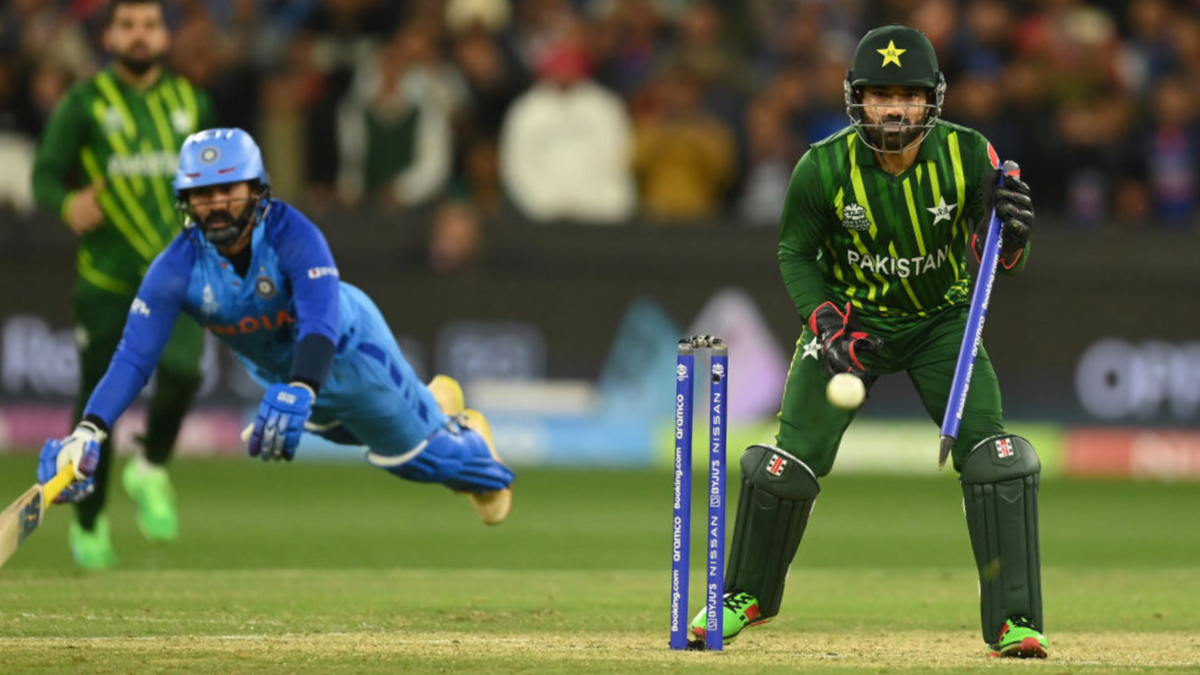
India’s will continue to be spoken about in the days to come, with numerous aspects and tactics still being discussed and criticised from that night in Melbourne, particularly with Mohammad Nawaz’s 16-run last over.
Bet365 will be Live Streaming all of the T20 World Cup matches direct to your iPhone, iPad or Android device, as well as desktop. This means that every T20 World Cup fixture will be available to bet365 customers wherever they are in the world.
The over contained nearly everything in the cricketing lexicon, but failed to prevent India from reaching the target, despite Pakistan trying out different ways to out-think Virat Kohli and his partners. They even had wicketkeeper Mohammad Rizwan stand back to the left-arm spinner a la Vijay Yadav in the 1993 Hero Cup semi-final, to Sachin Tendulkar. It was an unusual sight: Rizwan stood more than a few steps back as he would do for a medium-pace bowler, instead of standing up to the stumps, as is the convention against spinners.
The plausible explanation to Rizwan’s tactic may be attributed to Nawaz bowling seam-ups and yorkers instead of spin. In such a scenario, the wicketkeeper’s changed position would have ensured outside edges and byes being stopped, keeping additional runs in check. For the first four balls, Rizwan stood back, with Nawaz bowling from an unusually longer run-up.
However, Nawaz missed his mark multiple times. He bowled a couple of wides, and a waist-high no-ball that went for six. With two balls remaining, Rizwan returned to stand up to the sticks; he also effected a sharp stumping of Dinesh Karthik that nearly derailed India off the game.
The ploy to stand back, however, was not received well by everyone. Former captain and coach Misbah-ul-Haq, one of the panelists on the A Sport’s TV show ‘The Pavilion’, wondered why Rizwan had to resort to such a manoeuvre.
“Why did Rizwan go back?” asked Misbah. “Normally, even if he was bowling medium-pace, even if he was attempting yorkers – what we do is, if it’s a bowler with low pace, we bring the keeper up so that the batsman can’t use his feet. At least create a doubt in his mind that he might get stumped. That was strange. You are putting the keeper back and giving [the batter] a clue that you’ll be bowling straight, he can step out and play however he wants to. That was strange. That shows that we were done with the pressure.”
“Everybody was lost,” added fellow panelist Wasim Akram. “Babar should learn quickly on how to gather the team back. He should have had a quick chat with everyone.”
Elsewhere, Kamran Akmal, Pakistan’s second most-capped wicketkeeper, mirrored Misbah’s views on a segment for ARY News: “Last over, 16 required: why did Rizwan go so far back? Why did he give batters the free mind? You stand up to the stumps, the batter will step out and might get stumped. He’d feel the pressure. You’ve released all the pressure.
“Rizwan is so experienced, but when he was going back, why did no one tell him not to? [The batter] is not getting out stumped, neither is he going to be run out. Now I [the batter] can hit straight, or anywhere. If the keeper’s sticking to the stumps, the batter will fear getting stumped. I am not sure if the management will discuss this technical thing. I guarantee you. They won’t. They just think on the spot, wishing that they’ll do well, and they lose themselves in that feeling. It’s a professional team. If we’re not professional, we can’t do well.”
Pakistan will look to quickly bounce back against Zimbabwe on October 27, the same day India take on the Netherlands. Here’s how you can watch both matches live.
If you’re looking to re-watch the last over:








